We have previously discussed the Step Pyramid, its architect, Imhotep, and the ruler for whom it was built, Zoser. We are going to turn to this pharaoh once again to introduce today's topic, since on the pedestal of one of his statues appears a rejit bird associated with some signs, constituting the oldest complete representation of the expression with which in Ancient Egypt they referred to the various human groups and especially to foreigners:the Nine Arches.
The rejit bird is the icon that identified the lapwing, a bird of the genus Vanellus and the same caradridae family as the seagull; it lives in aquatic habitats, so it was common in the Nile and its name had a phonetic similarity with the expression «all peoples praise me «, probably the reason why the pictogram that was used to represent it also served to refer to outsiders.
Initially, only the enemies of Kemet, which is the name the Egyptians used to call their country (it means something like black land or, literally, fertile mud from the Nile that prolongs life , alluding to the slime left by the river waters when it receded after the flood and facilitated agriculture), later spreading to everyone.
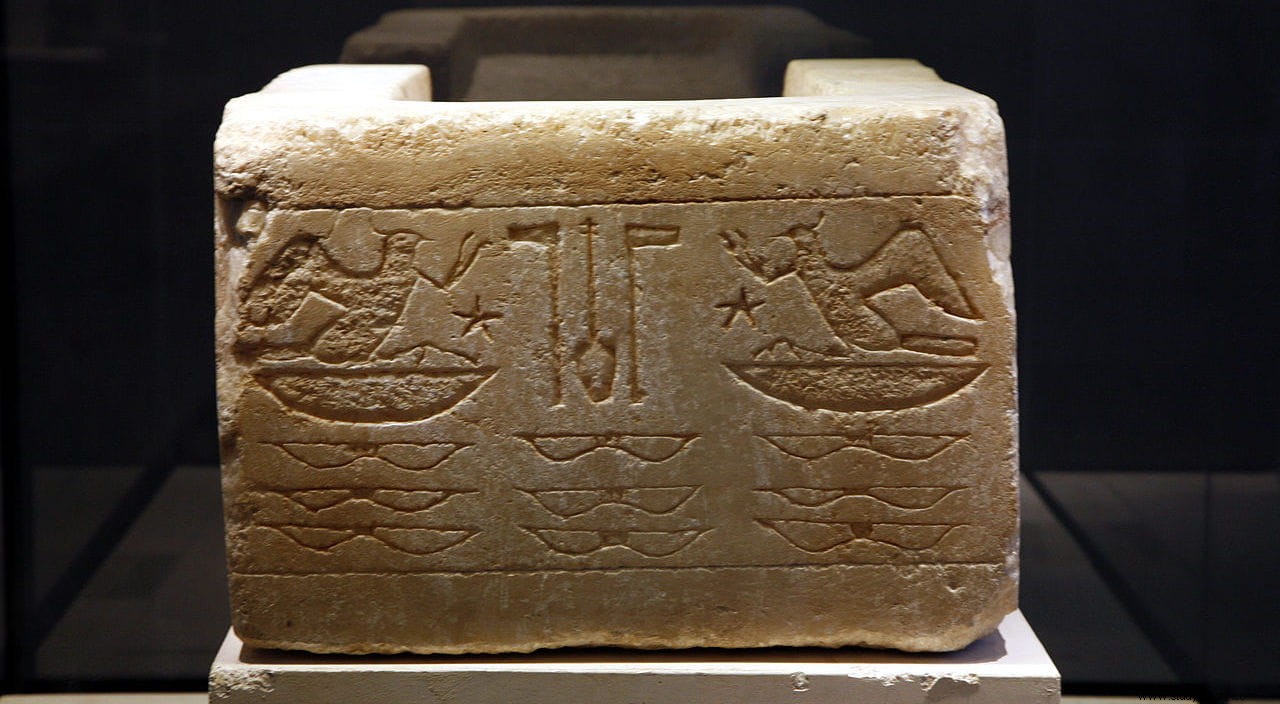
However, the rejit bird was just one more hieroglyphic resource, generally carved on the doors of temples with the aim of indicating to the faithful that that part of the building was open to the public; in these cases, human arms were added to the animal. This use and the diffusion of the concept of the Nine Arches meant that, over time, the rejit bird changed its meaning -although in the same context-, passing first to identify the conquered peoples (when they were not shown figuratively, with their characteristic outfits) and, later, to the common Egyptian people. Which brings us back to the topic of this article.
The Nine Arches are not shown in the hieroglyphics of reliefs and papyri as a bird -although sometimes it also appears- but by means of a set of signs formed by a semicircle (the arch) followed by three groups of vertical lines or arches repeated nine times. Sometimes with the particularity that they are double, that is, they are in pairs, since it is the tied wings of the rejit bird.
The nine was a metaphor for totality (three times three), while the arc, which has the phonetic value of nb , is translatable as «all «, which served to allude to the multiple foreign infinite lands; the lines give the plural grammatical number. The phonetic transcription would be psḏt pḏt , «pesedjet pedjet «.
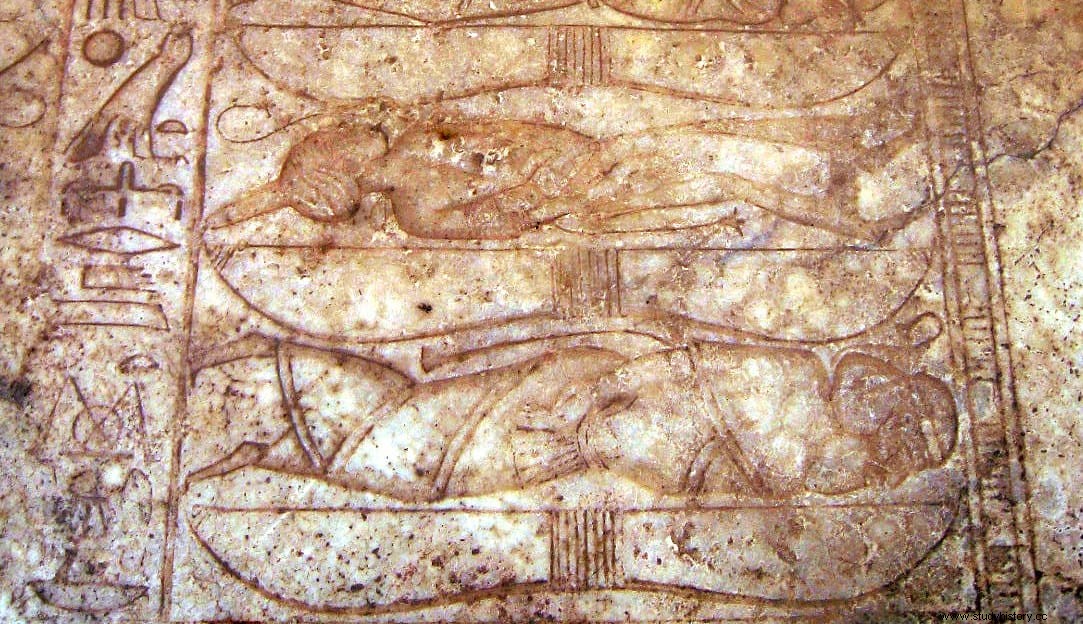
Therefore, the Nine Arches was an expression that went from defining known humanity - Egyptians included - to the territories surrounding Egypt, likely to be conquered or, on the contrary, to constitute a potential danger. Which were? In reality there is no list because the extension of the Egyptian Empire was changing over the centuries and, consequently, also the borders, with the consequent repercussion in the consideration that was given to one or the other neighbors. But, to name a few and saving the chronological distances, it would be necessary to include Nubians, Libyans, Hittites, Syrians, Persians...
The truth is that Egyptian cosmology was impregnated with a marked dualism, with opposing cosmic forces that are clearly evident in the myth of Osiris and his confrontation with Seth, for which some authors suggest that the idea of the Nine Arches would be at his time related to the polarity between order and chaos, being the foreigners the personification of that disorder against the stability and harmony that the pharaoh embodied.
In fact, the meaning of the expression was double because it also alluded to the enormous power of the pharaoh, hence the ideogram was often accompanied by images of defeated enemies; they were represented giving their bow to the pharaoh as a sign of submission, since the bow had an allegorical character (pharaoh, by the way, is another example of a symbolic name, since the word means «Great house although it was not actually used in that sense until the Eighteenth Dynasty).
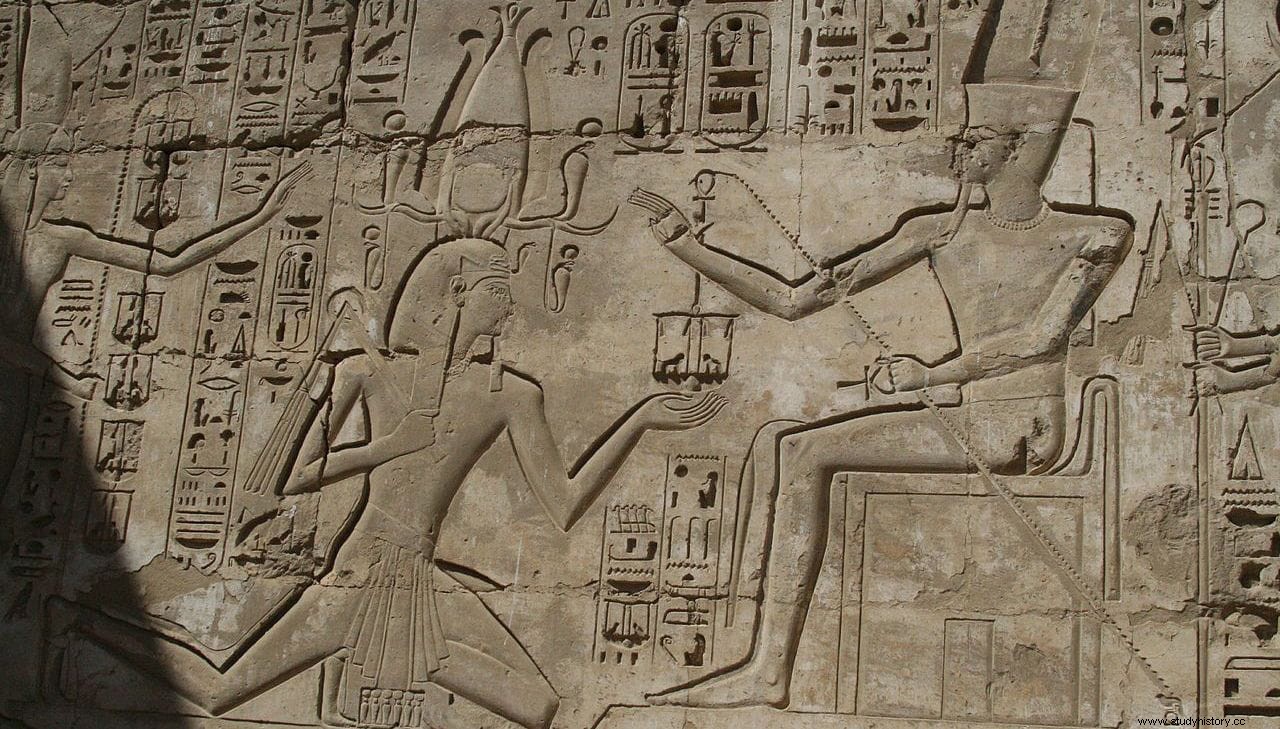
For this reason, during the Heb Sed festival - a kind of cyclical jubilee to renew his physical and supernatural strength - he would shoot arrows towards the four cardinal points, thus manifesting and renewing his rights to universal power (unlike what happened in Greece, the bow was a weapon of prestige and a symbol of royal power). And that is also why the military in command of each of these border areas received the name of hry-pdt , which means "he who is above » (that is, chief) of the Arch, adding later the name of the place or the complement «... of the Lord of the Two Lands «.
At the beginning we said that the oldest complete representation of the expression Nine Arches is on the base of a seated statue of Zoser, who reigned in the III dynasty (approximately between 2665 and 2645 BC), showing him with his feet on said arches; It is probably a reference to the Nubians, since the Egyptian kingdom did not pass then the first cataract and further south was Nubia, which was known as Tai-Seiti, that is, the land of the “ arch people ”, alluding to the skill of its inhabitants with that weapon.
Now, there are much earlier records; already from the Late Predynastic Period, whose chronology moves between the years 3200 and 3000 BC, as evidenced by the discovery of a scepter in Nejen (Hieracómpolis), capital of Upper Egypt, whose head has nine carved arches, or a stone vessel and the mace of the Scorpion King found at Nejen and decorated with the same motif. However, it is in statuary -at least from the Middle Kingdom- where it is found most often, probably because the usual materials, stone and metal, are more resistant and have found it easier to last over the millennia. There are quite a few examples.
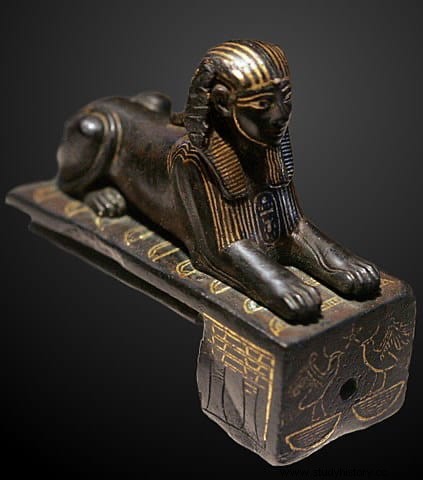
This is the case of the bronze sphinx of Tutmosis III, pharaoh of the XVIII dynasty, which shows him lying on the Nine Arches and on the front of the pedestal there are two rejit birds to refer to the peoples, accompanied by the aforementioned hieroglyphic phoneme «nb » for the concept of totality and a star that means the verb to praise, the whole expressing the phrase «all peoples praise me «. Also, on the side of said pedestal are the Dyed, some pillars or posts with tied sheaves of grain whose iconography is believed to date back to prehistory and that in Egypt symbolized the backbone of Osiris; combined with the above, they had a sense of stability and dominance.
In the following dynasty, the XIX, we also find the Nine Arches on another base, that of Ramses II of Antinopolis (a city founded by the emperor Hadrian in the fifteenth nome of Upper Egypt, on the previous Egyptian of Hir-we); the statue itself, made of alabaster, has been lost and only the feet remain, stepping on a bas-relief of the arches. By the way, his father, Seti I, used Nebty (one of the royal titles that alluded to the union of Upper and Lower Egypt) as a name Uehemmesut Sejemjepesh Derpedyetpesdyet , which translates as “He who is reborn, mighty who subdues the Nine Bows » and as the name of Hor-Nub (another title that associated the pharaoh with Horus) Uehemjau Ueserpedyutemtaunebu , which means "He who reappears [glorious] of power upon the bows in all lands «.

From Nectanebo II, from the XXX dynasty, there is also a pedestal -now without a statue- with an inscription similar to the previous ones:the Nine Arches and the pillars forming the phrase «all peoples praise me » next to the expression Ntr-Nfr , «Magnificent Pharaoh «. Likewise, one could cite the pedestal of the statue of a queen from the late period (on the front it reads Hotep , funerary offering term) of which, as in the reviewed case of Ramses II, only the feet remain and these are on the Nine Arches.
The truth is that there are more examples and not only in statues but also in the reliefs that decorated the walls of temples such as those of Abu Simbel, Edfu, Karnak or Medinet Habú. But let's end with one of a very popular pharaoh today:Tutankhamen, of the 19th dynasty. His famous tomb, the one discovered by Howard Carter and Lord Carnavon in 1922, was closed with a knotted rope whose clay seal bore the figure of a jackal, the god Anubis, sprawled over the Nine Arches. And that's not all; the young pharaoh's sandals have a series of eight loops each, four on the heel and four on the toe, and in the middle the silhouettes of two foreigners, an obvious metaphor that they were trampled.
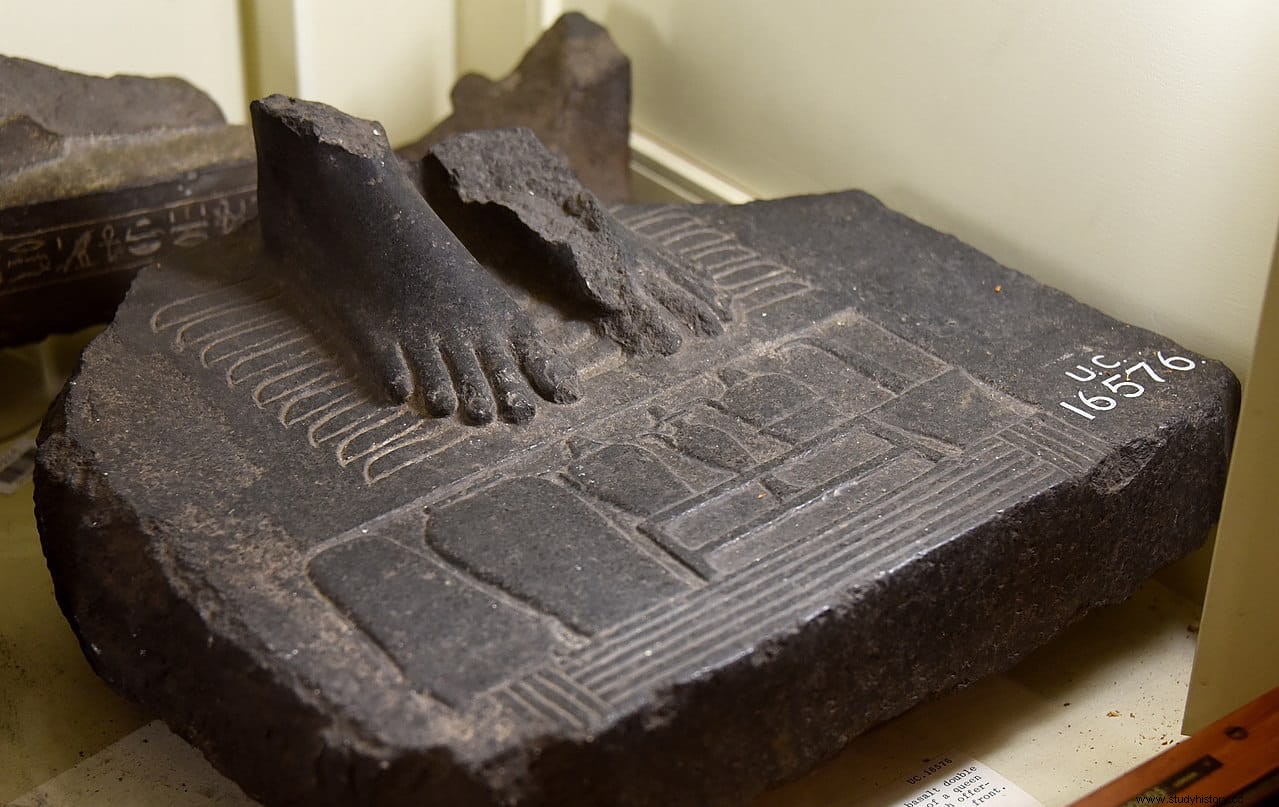
The latter, in short, transcended the strictly Egyptian sphere and became common in other cultures; see if not the Bible itself, in which the Book of Psalms 110:1 says verbatim:
Today, trampling the enemy has become a universal idea.
